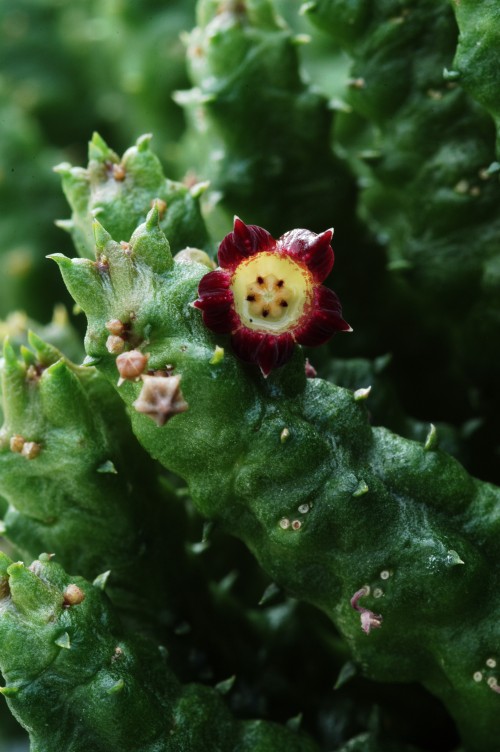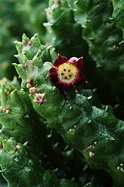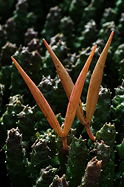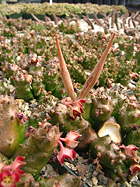This relatively new monotype (described in Novon 10:354, 2000) is known only from the Baynes Mtns of northwestern Namibia, where it usually grows concealed among tufts of grass at 1500 – 1600 m atop the prominent sandstone cliffs that overlook the Kunene River. Its clumping stems have a rugulose (rough texture resembling sandpaper) epidermis quite responsive to light intensity, being bright glossy-green or blushing, dark-brownish with just a few days exposure to brighter light. Vegetatively, the species resembles Anomalluma dodsoniana (placed in Caralluma or Pseudolithos by some authors), but the ridged, papillate, crested corolla-lobes of B. lophophora are unique among stapeliads. The flowers hang near the stem-tips from slender pedicels and are maroon with a white throat. Fly pollinators are attracted to a mild but detectable odor. These are not species specific as the plants form fruits in cultivation well-removed from habitat and its particular pollinators. Divisions of about three dozen clones of HBG 97463, second generation seedlings of Bruyns 8000, the type collection, made in Dec., 1999. $5.

Published in the Cactus and Succulent Journal, Vol. 80 (2), March - April, 2008


